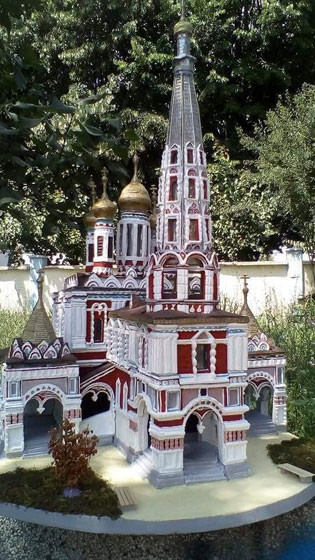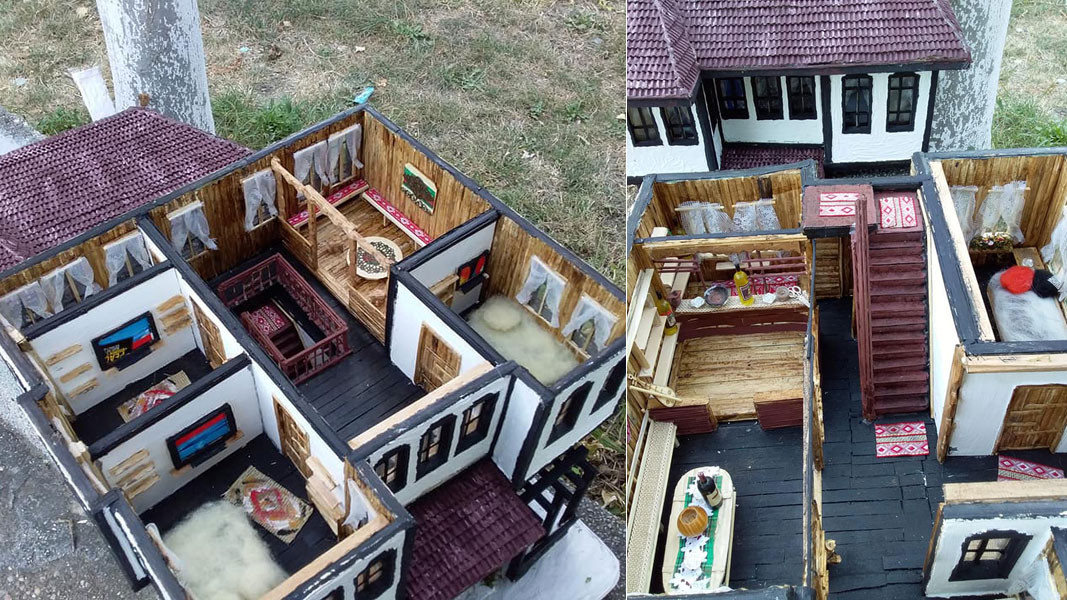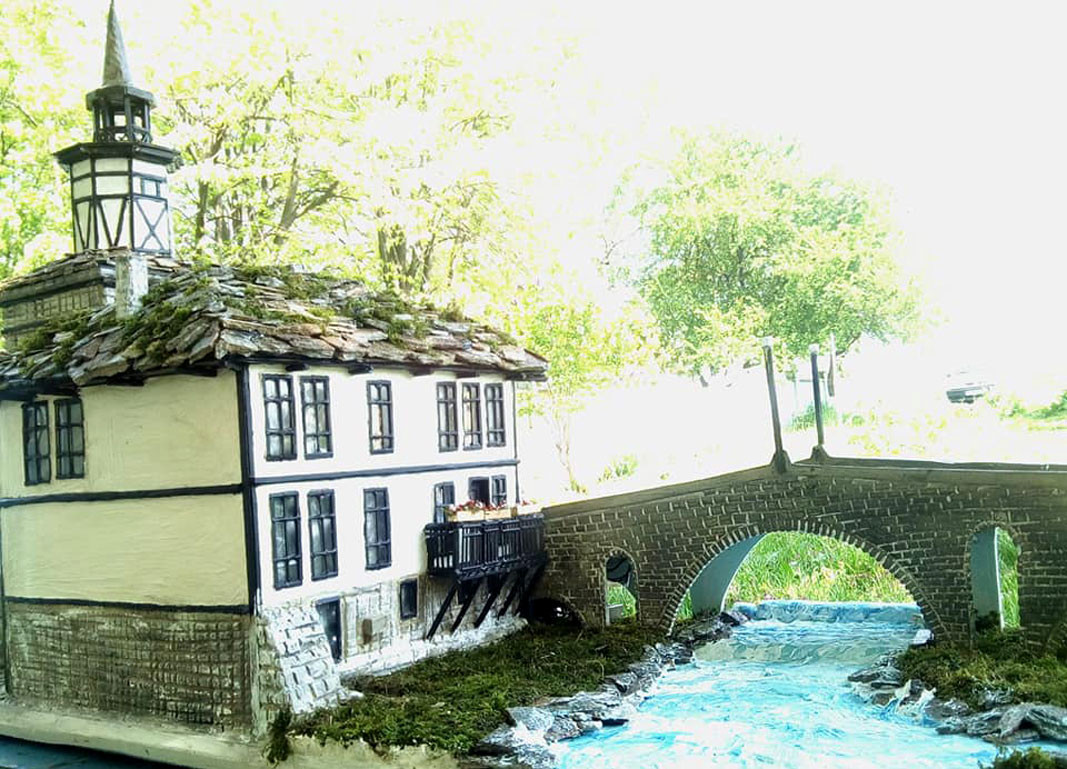 Tsvetanka Georgieva made her first small-scale model when she was just 6, and she could hardly have known then that years later her hobby would turn into a way of life, and the number of scale model houses she has made would reach more than 300.
Tsvetanka Georgieva made her first small-scale model when she was just 6, and she could hardly have known then that years later her hobby would turn into a way of life, and the number of scale model houses she has made would reach more than 300.
“The idea to turn scale model construction into a profession came about 10 years ago when I returned to Bulgaria for good,” she says. “My whole life is connected with art, our entire family are artisans. In Germany and in Turkey I drew pictures, but then I got fed up with living in another country. The first house I made a gifted to the kindergarten my daughter went to. They liked it very much and that is how things turned professional. I have practiced different professions but then I said to myself: wait, there is a handicraft I am good at, so why not do what you love? So I stopped running away from what I was destined to do.”
To begin with Tsvetanka used mostly natural materials – cardboard, wood, stone, but then she turned more professional and started using a combination with building materials depending on the effect she was after. From the smallest 17х20 cm. house to the biggest – over one meter – they are equally captivating, especially with the precision of detail:

“Architectural models are small-scale models, so as to attain a 1:1 ratio with the original, and the bigger it is, the more detailed the house,” says Tsvetanka Georgieva. “Some want the house that once belonged to their grandparents and which is now gone, so they describe it, I make sketches, and if they are what they want, I make the house. There are others who send me photographs of a house I can model it on. But when I am working on something that is my own, personal, the only thing that guides me is what catches my fancy. I start surfing the Internet or go through pictures I have taken that stir a powerful emotion – that is how I decide which house to construct, sometimes it is the exactly same, other times I may add something. It all depends on the emotion.”

It takes from 2-3 days up to one month to make a scale model house.
“Most houses are intended as garden decoration and that is why they are closed, but there are some with an opening roof and even moving floors and furniture inside in an old-time style,” Tsvetanka Georgieva adds. She has made models of architectural and other kinds of landmarks, more modern luxury houses with swimming pools and, of course, houses from the time of the Bulgarian National Revival. The most unorthodox scale model is of the clock tower in Tryavna – 150х80 cm., complete with lighting, the river and the bridge over it. Where does she draw her inspiration from?

“Most of all from music. I just find the music that is on the same wavelength as my own mood, the emotions I am feeling, and I sit down to work. If you do not put your heart into what you are making, it will be just an object, nothing more. But if you do put your heart in it, it is like transforming energy into matter, at least that is how I see it. It is not easy to get things done in Bulgaria, you have to invest so much energy to make things work. But then if it were easy it wouldn’t be fun!”
Photos: courtesy of Tsvetanka Georgieva
"The dying fire is often rekindled thanks to a few remaining embers." With these warm words, Slavic philology professor Krassimir Stantchev inspires hope that the fading interest in the Bulgarian alphabet, the Bulgarian language and Bulgarian culture..
2021 population census data from Bulgaria show that there are 654,547 people living in the country with an acknowledged permanently reduced capacity for work or degree of disability. Of them, 22,248 are children, and 632,299 are 16 or over. 578,517..
“Ways have been found, in a unique way, to finance each sector in culture the wrong way. Artists are now working as if they are in a factory, and instead of forming society’s taste, they are forced to cater to this taste so as to earn more money,”..
Romanian artist Saddo has been invited to participate in the second Balkan edition of the Pictoplasma festival for contemporary art, design and..

+359 2 9336 661
